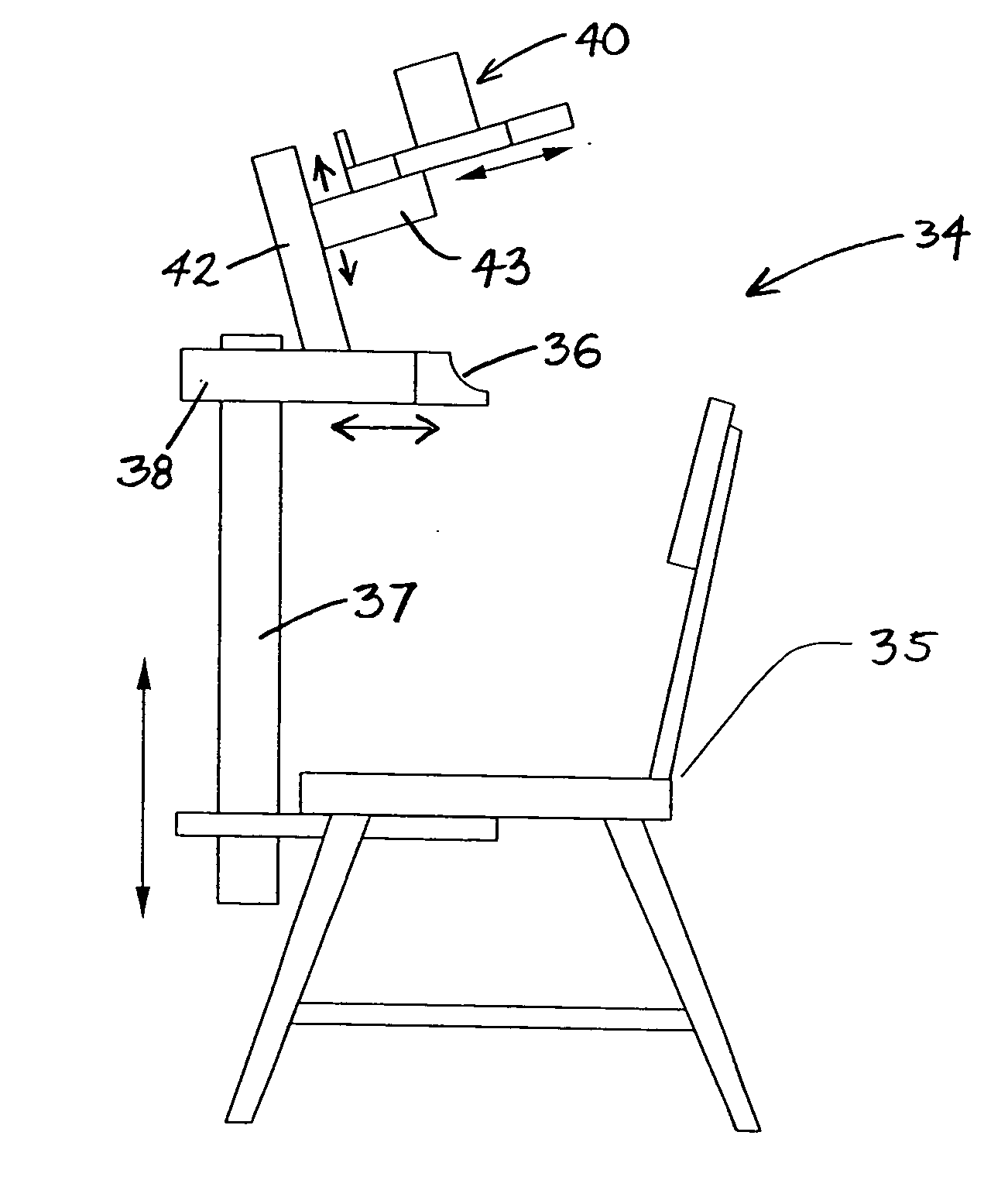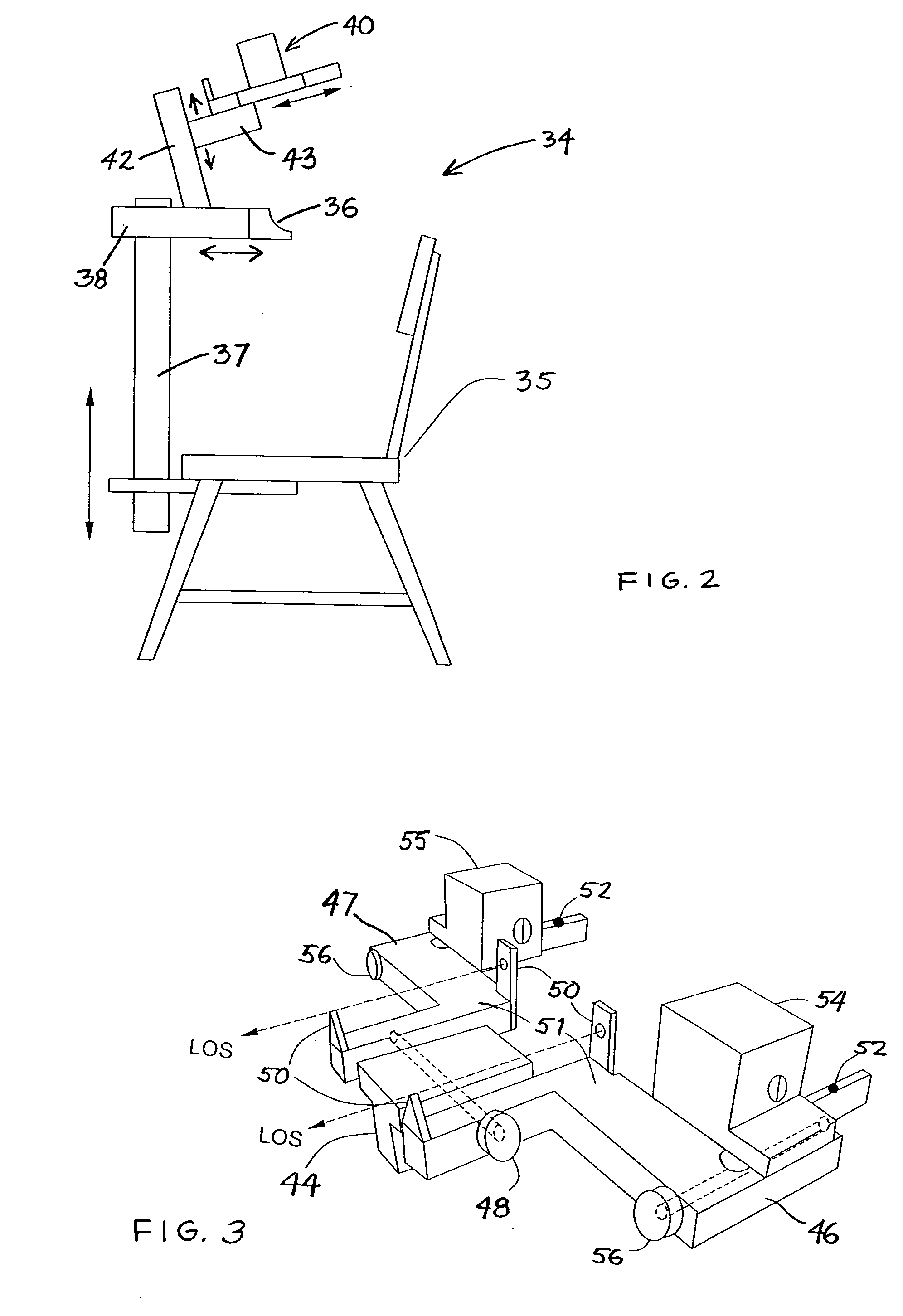Method and apparatus for manufacturing a custom fit optical display helmet
a technology of optical display and manufacturing method, which is applied in the field of manufacturing methods of helmets, can solve the problems of total visual loss of optical display, adversely affecting the center of gravity (cg) of typical flight helmets, and the addition of substantial mass of optical display systems
- Summary
- Abstract
- Description
- Claims
- Application Information
AI Technical Summary
Benefits of technology
Problems solved by technology
Method used
Image
Examples
Embodiment Construction
[0039] FIG. 1 shows a subject's head 2 fitted with a helmet 10 comprising a helmet shell 12 provided with electronics and / or optics 14 for projecting an image onto a visor, or optics 16 which are aligned with the subject's eyes when the helmet 10 is in place. This alignment is achieved with a custom-fit protective liner 20 which brings the subjects eyes into alignment with and the proper distance from the visor image or the optics 16, without the need for adjusting the position of the optics with respect to the helmet shell 12.
[0040] The custom-fit protective liner 20 includes a block of energy absorbing material 22 having an outer surface 24 which forms the outer surface of the protective liner, and an inner surface 26 which is offset from the subject's head by a constant distance which is compensated by a layer of comfort foam 28 and a cover 30 having a collective thickness substantially equal to the offset. The cover 30 therefore has an inner surface 32 which forms the inner surf...
PUM
| Property | Measurement | Unit |
|---|---|---|
| acute angle | aaaaa | aaaaa |
| radius | aaaaa | aaaaa |
| look-down angle | aaaaa | aaaaa |
Abstract
Description
Claims
Application Information
 Login to View More
Login to View More - R&D
- Intellectual Property
- Life Sciences
- Materials
- Tech Scout
- Unparalleled Data Quality
- Higher Quality Content
- 60% Fewer Hallucinations
Browse by: Latest US Patents, China's latest patents, Technical Efficacy Thesaurus, Application Domain, Technology Topic, Popular Technical Reports.
© 2025 PatSnap. All rights reserved.Legal|Privacy policy|Modern Slavery Act Transparency Statement|Sitemap|About US| Contact US: help@patsnap.com



